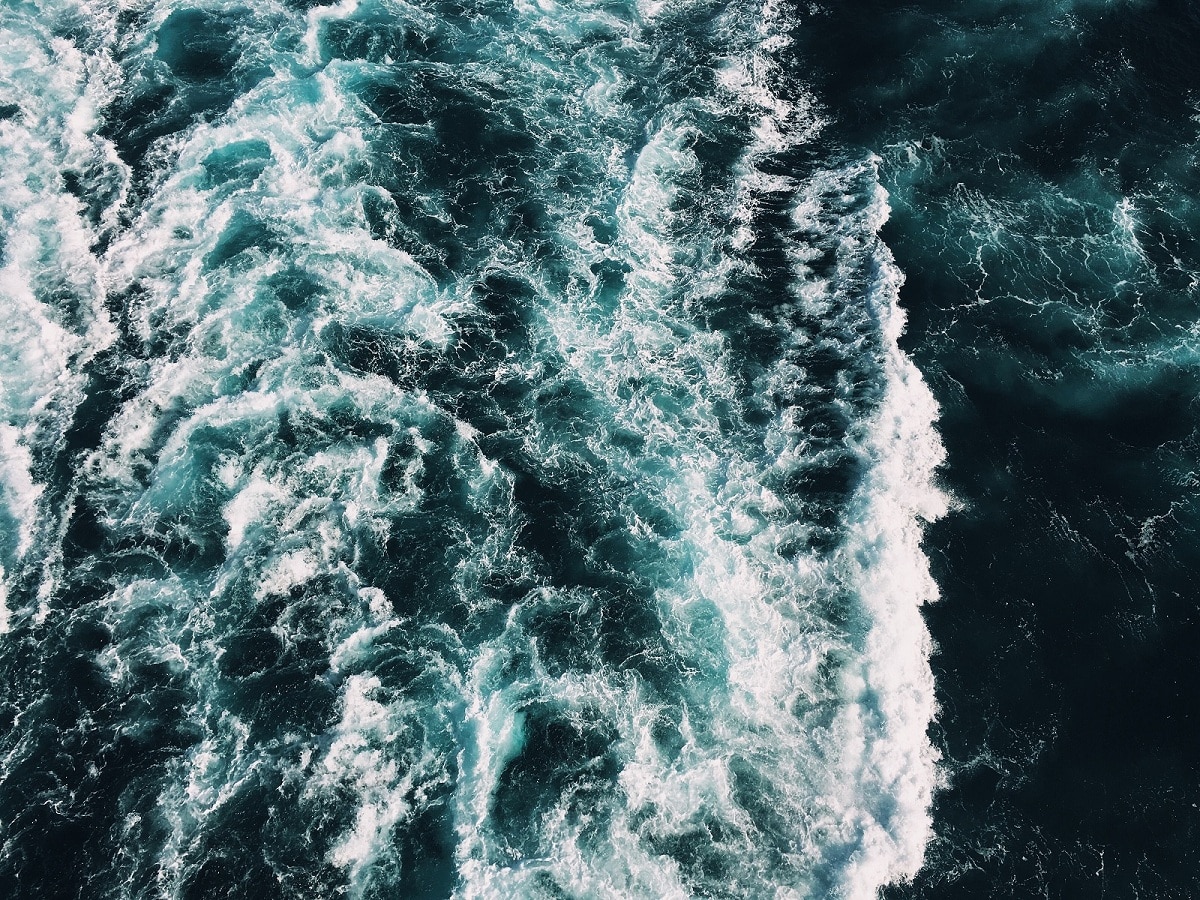
Our own experience tells us that the color of the sea can change dramatically with time and place: from bluish greens to very light greens to dark blues, grays, and browns. It turns out that changes in ocean color are the result of a combination of physical and biological factors.
In this article we explain in detail what the color of the sea is, what it depends on and why we see it in one way or another.
color of the sea

Pure water is, of course, colorless. But even so, if we look at depths that light does not easily reach, it appears dark blue. The human eye contains cells that can detect electromagnetic radiation with wavelengths between 380 and 700 nanometers. Within this range, different wavelengths correspond to the different colors we see in the rainbow.
Water molecules better absorb light that reaches longer wavelengths, namely red, orange, yellow, and green. Then, only blue remains and the length is shorter. Since blue light is less likely to be absorbed, it reaches deeper depths, making the water appear blue. It's about physics. But biology matters too, because it's the tiny microbes called phytoplankton that have the biggest impact on the color of the ocean.
Biological processes that affect the color of the sea

Often smaller than a needle, these single-celled algae use green pigments to capture the sun's energy, converting water and carbon dioxide into organic components that make up their bodies. Through this photosynthesis, they are responsible for producing about half of the oxygen that we humans consume.
Essentially, phytoplankton absorb red and blue electromagnetic radiation in the visible spectrum, but reflect green, which explains why the waters they inhabit appear green. Determining the color of the ocean is not just an aesthetic exercise.
Scientists have been monitoring the oceans with the help of satellites since 1978, and while the images have aesthetic value, they serve another purpose: can be used to study pollution and phytoplankton. Changes in the amounts of these two elements, and how much they increase or decrease, can also provide signs of global warming. The more phytoplankton there are on the sea surface, the more carbon dioxide is captured from the atmosphere. But how do scientists determine the color of the seas and oceans?
Scientific studies

The most widely used technique involves the use of satellites with instruments to measure the intensity of visible light from water. Most of the sunlight near the sea surface is captured by airborne particles. The rest is well absorbed or dispersed in water. But about 10 percent of the light bounces back into the atmosphere and possibly back to the satellite, which measures how much of this light it is found in the green or blue of the spectrum. Computers use this data to estimate the amount of chlorophyll in the water. The study of the color of the ocean also gave more important results.
Last year, US researchers published a study showing that Chlorophyll levels in the world's oceans changed between 1998 and 2012. No trends were seen in the study, but color changes recorded by satellites showed that chlorophyll levels fell in parts of the northern hemisphere and increased in parts of the south.
This has led some to believe that low-chlorophyll regions of the ocean known as "marine deserts" are expanding due to rising sea temperatures. But some say there isn't yet enough data to show how global warming affects phytoplankton levels in the oceans, which could change naturally in cycles of 15 years or more.
Some studies suggest that scientists would need to monitor ocean color for more than 40 years to draw conclusions. Only then will we be able to determine if and to what extent the color of the ocean has changed. Hence to know if humans have any influence on the levels of existing plankton, and therefore on the carbon cycle.
What color will the sea be in the year 2100?
Ocean warming alters ocean circulation and the portion of deep water that rises to the surface. Phytoplankton need light (its energy) and nutrients. Most of these nutrients come from the deep. Changes caused by warming have led to fewer nutrients reaching the surface, so phytoplankton are likely to decline in many parts of the ocean.
The color of the sea depends on how the sun's rays interact with the composition of the water. Also, water molecules absorb almost all sunlight except blue, so the blue is reflected.
On the other hand, there is not only water in the ocean, but also plants, microorganisms and other organic matter. One example is phytoplankton, which contains chlorophyll, a green, sunlight-absorbing pigment that plants need to make food. Also, most of the light reflected by phytoplankton is green. It is for this reason that many parts of the ocean have a green hue.
However, as the oceans warm, some phytoplankton may become extinct, others may thrive, and still others may migrate to different regions. Temperature also affects the growth rate of phytoplankton. Some species adapted to warm water are faster than others that are adapted to cold water. So, in areas with warmer waters, there may be more nutrients, so there will be regional variations in the composition, number, and distribution of the marine microbial communities that color the water.
The colors of the model they used to study evolution have been used to predict changes in phytoplankton, such as local algae blooms or ocean acidification.
I hope that with this information you can learn more about what the color of the sea is and what factors it depends on.